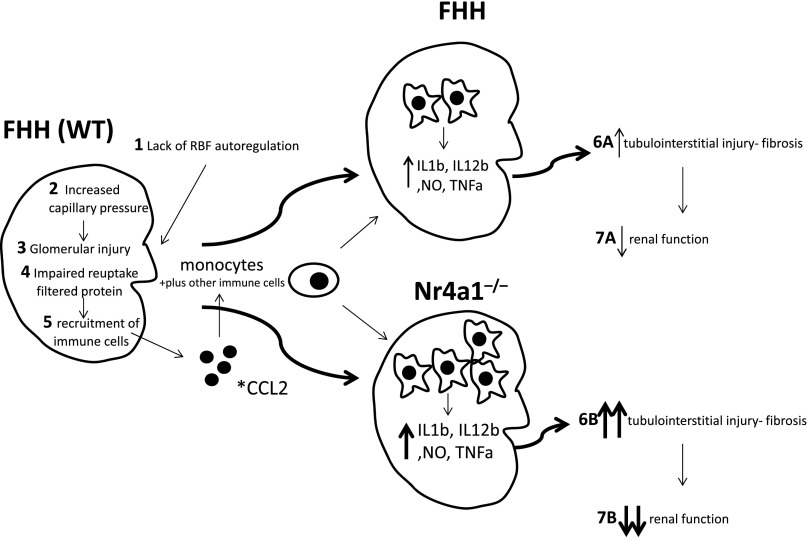Figure 5.
Proposed pathophysiologic mechanism of enhanced immune kidney injury in Nr4a1−/− compared with FHH rats. Wild-type FHH animals exhibit a genetic predisposition to renal injury via the following: (1) lack of RBF autoregulation, (2) increased capillary pressure, (3) glomerular injury, (4) protein overload and tubular defects, and (5) recruitment of inflammatory cells. This mechanism, including lack of autoregulation, tubular defects, and inflammation, promotes the progressive injury and reduced renal function (6 and 7) observed in the FHH. Loss of Nr4a1 on the FHH genetic background provides an environment in which enhanced immune activation (shift toward M1 macrophages and possibly other immune cells) exacerbates and/or accelerates inflammatory processes that lead to more injury, culminating in an additional reduction in renal function compared with FHH. *CCL2 also known or monocyte chemoattractant protein-1 (MCP-1) was the top differentially expressed gene and upregulated in kidney from Nr4a1−/− compared with FHH rats (Supplemental Figure 6). WT, wild type; NO, nitric oxide.

